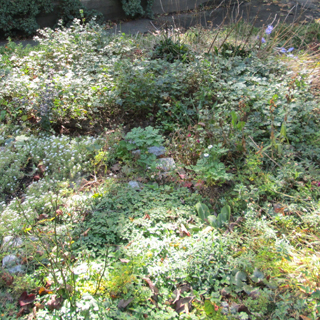
There are many, and we are inclined to agree with them, that September is the start of the gardening year. Summer holidays are largely over, the heat of summer, and boy, have we had some of that this year, is dissipating and we feel more inclined to get out and work in the garden. And in fact, the garden feels more inclined to work with us.
It is also time to reflect on what has gone well or badly this year and, more importantly, why.
Although we all became very morose over that wet wet winter and spring, it has actually done our hardy shrubs and trees the power of good. Certainly, in our gardens, we are experiencing that all–too-Cornish problem of overgrowth, when the water table laid down in the the winter and spring, coupled with the heat and dry summer have caused our shrubby stuff to put on a good deal of growth. While you don’t want to be carrying out full prunes at this time of year, it would not be wrong to have a judicious tidy up of evergreens in particular that are getting a little ahead of themselves. Lift crowns, rein in and neaten up. Plants are unlikely to scorch from the sun or wind, and frosts are a way off yet.
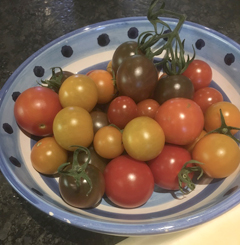 Other things that seem to have grown extraordinarily well this year, principally because of the hot and dry period are the warm weather crops. This include tomatoes (lovely long trusses of the sweetest fruit) and even aubergines.
Other things that seem to have grown extraordinarily well this year, principally because of the hot and dry period are the warm weather crops. This include tomatoes (lovely long trusses of the sweetest fruit) and even aubergines.
As for our figs and grapes – well, we never expected to be eating home-grown figs in those numbers this summer, and multiple decent bunches of grapes are teetering on the edge of ready. A tip – net or bag your nearly-ripe figs and grapes with a fine meshed fleece, or you will lose them to the blackbirds and wasps. The extra layer helps the fruit ripen more quickly too. Florence fennel is good this year too, provided you got them in the ground at just the right time. (Helen did, Sarah was a bit previous and the hot weather forced them to go to seed. More by accident than design, but just sayin’…..)
On the hot flower front, dahlias, glads, salvias and cosmos, amongst others, are having a a spectacular year. We have been picking armfuls, and helped along by a heavy mulch of manure last winter, the dahlias are 5ft tall, with lovely strong stems for cutting.
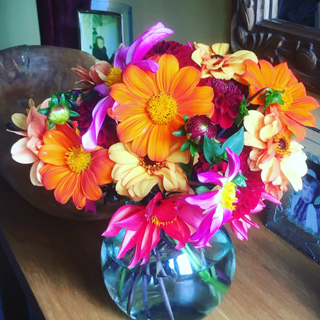 Salvias are such a valuable late summer shrub or sub-shrub, depending on which you have, so buzz out and invest in some now while they are looking magnificent. They will reward you until the end of October or November even, if the weather is clement. There are one or two salvias which are not at all or less frost hardy, so make sure you know what you have. Some may be better in pots so you can whip them in in the winter – having finally replaced a glorious salvia leucantha (Mexican sage) this year after losing a precious one 3 years ago, Helen is taking no chances, no sirree.
Salvias are such a valuable late summer shrub or sub-shrub, depending on which you have, so buzz out and invest in some now while they are looking magnificent. They will reward you until the end of October or November even, if the weather is clement. There are one or two salvias which are not at all or less frost hardy, so make sure you know what you have. Some may be better in pots so you can whip them in in the winter – having finally replaced a glorious salvia leucantha (Mexican sage) this year after losing a precious one 3 years ago, Helen is taking no chances, no sirree.
The cucurbits (cucumbers and courgettes in particular) have also been rocket-fuelled but don’t waste the output even if you are sick to death of them with every meal. Pickle your cucumbers (easy peasy, takes ½ an hour) and sneak courgettes into cakes and savoury loaves. Or give them to the dog – or is that just our dogs that eat them?
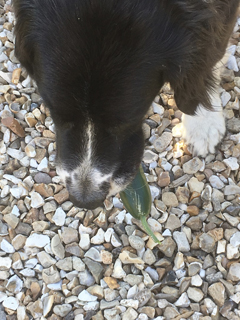 The legumes have also done extremely well – peas, runner beans, French beans galore. Luckily, these freeze well so again, don’t waste. We are unlikely to get crops like these 2 years running so make the most of them.
The legumes have also done extremely well – peas, runner beans, French beans galore. Luckily, these freeze well so again, don’t waste. We are unlikely to get crops like these 2 years running so make the most of them.
Conversely, root vegetables have done less well. Our spuds are a bit small and dry because of that extended period of dry weather, and that is a disappointment. We doubt many of us have the time or inclination to hose our spuds every night. Similarly, carrots and parsnips have been reluctant to germinate and so we’ll be buying them this winter. Beetroot has done surprisingly well in the circumstances, but celeriac is likely to be grotty if you didn’t water like fury during the dry patch. They will probably be inedible.
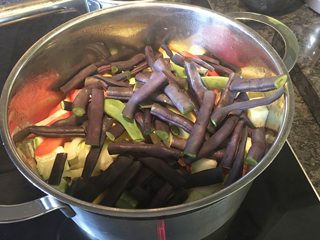 We guess all this is a longwinded way of saying: the weather controls us and our gardening, not vice versa, and don’t beat yourself up if you’ve had some failures. Sometimes you just can’t It happens even to the best of gardeners amongst us and rarely is it anything we have done wrong. Allow your wounded pride to repair, dust yourself off, and get those seed catalogues for next year.
We guess all this is a longwinded way of saying: the weather controls us and our gardening, not vice versa, and don’t beat yourself up if you’ve had some failures. Sometimes you just can’t It happens even to the best of gardeners amongst us and rarely is it anything we have done wrong. Allow your wounded pride to repair, dust yourself off, and get those seed catalogues for next year.
And spring bulbs are starting to appear in the shops, so get planting those daffs and other spring bulbs while the soil is warm and a bit damper. As always, leave tulips until November when it is much colder, or you risk tulip fire which will ruin your bulbs result in very poor plants.
As September goes into October, steal a march while the soil is still warm to divide some perennials that might also have doubled and redoubled this year. Share the proceeds with friends or pot them up and save them for a plant swap that might be happening somewhere near you next Spring. Now, there’s an idea………..Keep an eye out around Veryan and on this website for more information.
Sarah Daniel and Helen Robins, Pengelly Garden Centre
